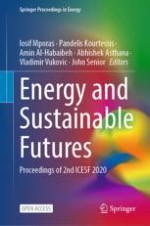31.1 Introduction
31.2 Methodology
31.3 Pollution Data Processing
31.4 Results and Discussions
Mode | Walk | Bicycle | Car | Bus | Tram |
|---|---|---|---|---|---|
No samples | 3108 | 291 | 243 | 359 | 195 |
Percentage (%) | 74 | 7 | 6 | 9 | 5 |
31.4.1 Effect of Time of Day
From | To | Description | Time Interval |
|---|---|---|---|
00:00 | 06:00 | Quiet morning time | A |
06:00 | 08:00 | Early morning hours | B |
08:00 | 10:00 | Rush hours | C |
10:00 | 16:00 | Working hours | D |
16:00 | 18:00 | Evening rush hours | E |
18:00 | 21:00 | Evening social hours | F |
